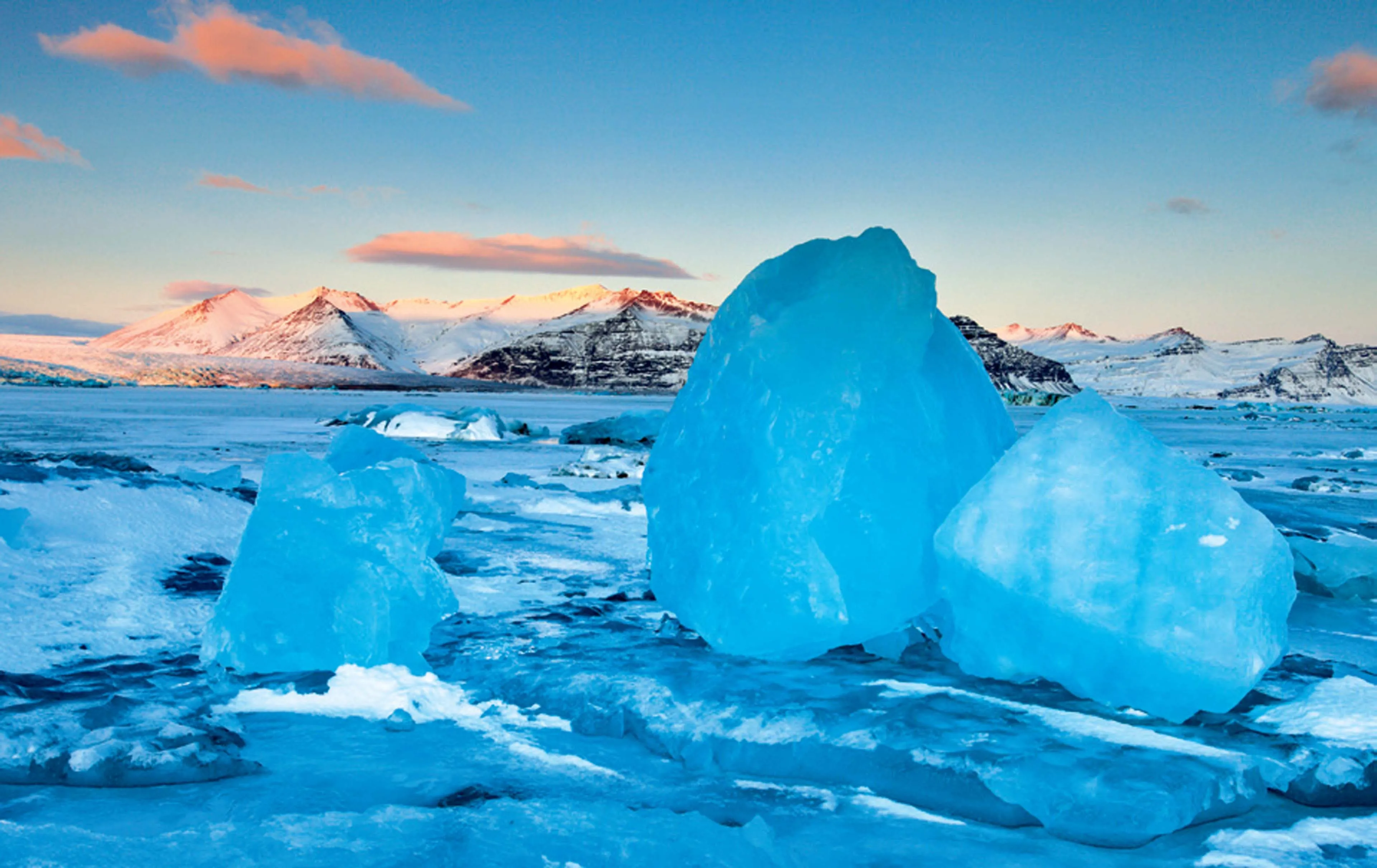AWarmer, But Greener Future
2012-10-16ByDingYing
By Ding Ying
AWarmer, But Greener Future
By Ding Ying
G lobal w arm ing is still a reality, and China must adapt
C hina’s average temperature in the past w inter hit its lowest in 27 years,about 1 degree Celsius lower than normal. Other countries in Asia and Europe were also hit by cold temperatures and snowstorms. Many people wondered if the climate had stopped warm ing and started going cold.
But experts believe the long-term trend of global warming will continue, in spite of the cold w inter. China w ill take the initiative in saving energy, reducing greenhouse gas em issions and sw itching to an environmentally friendly model of grow th because this is the only way for the country to realize sustainable econom ic and social development.
Still w a rm ing
A single cold winter does not change the trend of global warming. Statistics from China and other countries throughout the world prove that in the past century the average land surface temperature has increased.
“There is no doubt that global temperatures have been on the rise in the past century, and global warming hasn’t stopped yet. It’s too early to draw a conclusion that global warm ing triggered by human activities has stopped or the world is going to turn cold,” said Luo Yong, Deputy Director of the National Climate Center of China.
Unlike global climate change, which has existed for decades, cold spells in an individual w inter belong to a phenomenon related to weather changes. “Generally speaking, there are fewer cold days than in previous years as a result of global warming. But it is normal that cold spells can strike some places for some time,” Luo said.
A lthough cold spells were extremely active in Europe and Northeast Asia in the past w inter, many places elsewhere, like North America, experienced high tem peratures.December last year was the 12th warmest December on record, and January this year w as the 19th warmest January. “So it is unconvincing to conclude that global warming has ceased just because temperatures in certain places in the past w inter were lower,”said Luo.
The global average surface temperature has risen 0.74 degrees Celsius in the past century. Temperature increases have accelerated since the 1970s. 2010 was the warmest year in the past 100 years, and 2001-10 was the warmest decade in the past century.

SMELTING: Ice floats in the Jokulsarlon Lagoon in southeast Iceland. A large ice cap frac tured last w inter due to warm tem peratures, depositing m ighty b locks of ice into the water
“It is unconv incing to conc lud e tha t g loba l w arm ing has ceased just because tem p eratu res in ce rtain p laces in the past w in te r w e re low e r.”
— Luo Yong, Deputy Director of the National Climate Center of China
2011 was the ninth warmest year since 1880, when people started to take weather records, according to the latest statement of the U.S. National Aeronautics and Space Administration. Nine of the 10 hottest years in the world’s weather record were after 2000.Monitoring results from the U.S. National Oceanic and A tmospheric Adm inistration(NOAA) also showed the same tendency. The NOAA announced that 2011 was the warmestLa Ninayear since 1951.La Nina, characterized by unusually cold ocean temperatures in the eastern equatorial Pacific, often contributes to temperature drops around the globe.
The situation in China is sim ilar.According to a climate change report China released in November 2011, the average temperature of China’s land surface has increased 1.38 degrees Celsius since 1951. 2007 was the warmest year during the past century in China, and 2001-10 was its warmest decade.
China’s average temperature in 2011 was 9.3 degrees Celsius, 0.5 degrees higher than the average tem perature from 1971-2000,making 2011 the 14th warmest year since 1951.
Ding Yihui, Deputy Director General of China’s Climate Change Experts Committee,said while the average land surface temperature is on an upward trajectory, there can be short- or long-term fluctuations. It is normal that a certain period is colder or warmer than usual.
For example, 1920-40 and 1970-2000 were relatively warmer periods, while the fi rst two decades in the 20th century and 1950-70 were colder periods. According to World Meteorological Organization standards, only when the average temperature during 30 years shows obvious changes compared w ith the average temperature of the previous 30 years,can a new climate change tendency be confi rmed, Ding said.
Since the Industrial Revolution started in the 18th century, greenhouse gas concentrations in the atmosphere and the average land surface temperature have both increased. The trend is clearer in the Northern Hem isphere,which has more human-generated greenhouse gas em issions, than in the Southern Hem isphere. This is evidence that greenhouse gas emissions from human activities are probably a major cause of climate change, Luo said.
Despite possible benefits to agriculture, global warming threatens the world w ith a rising sea level, which will cause great harm to coastal areas. “If global warm ing proceeds slow ly in the next 50 to 100 years, it w ill create both advantages and disadvantages. But if it goes too fast for ecological, econom ic and social systems to adapt to the changes,its consequences w ill be unfavorable and even disastrous,” Luo said.
Ding believes it is still hard to say whether global warming will escalate in the near future. This is possible as greenhouse gas emissions keep going up. But countries around the world are intensifying efforts to cut emissions,and the role of oceans in regulating temperatures remains unknown. It w ill take several more years to draw a confi rmed conclusion on the pace of global climate change, he said.Putting the pace and effects of climate change aside, experts say efforts to save energy and control greenhouse gas em issions w ill be a boon for China’s economy. A “green transformation” will not only help protect the environment but also contribute to China’s industrial upgrading.
Green transfo rm a tion
Ding said whether the globe becomes colder or warmer, changing the unsustainable econom ic development mode to realize a green transformation is a good choice for China.The country should adjust its econom ic and social development plans to promote industries w ith low greenhouse gas em issions and environmentally friendly practices.
“The key is to promote green development and low-carbon economy to accelerate the transformation of its development mode,” he said.
Du Xiangwan, a research fellow w ith the China Academy of Engineering Physics, said there are indeed some countries in the world trying to force China to take on excessive emission reduction obligations as a tactic to restrain China’s rapid econom ic development.But he stressed “energy conservation” and“em ission reduction” are not merely trendy concepts in international climate negotiations,but are indispensable to China’s healthy development.
He said China’s rapid development has made tremendous achievements during the past 30 years. However, the current econom ic development mode is unsustainable becausepressure on the environment and energy resources keeps increasing.

CARBON CUTS:Environm entalists hold banners in London on Decem ber 3, 2011,calling for d rastic cuts in g lobal greenhouse gas em issions
“China has now come to a stage at which an economic transition is essential,” Du said.The efficiency of resource utilization must be enhanced, while resource consumption must be decreased. In the past, the country’s econom ic development created big environmental problems. Now, China must pursue environmentally friendly grow th by promoting innovation and encouraging high-valueadded industries.
Since 2001, China’s energy consumption has grown rapidly. It increased 2.2 times from 2001 to 2010, putting great pressure on resources and the environment. China’s GDP accounted for 9.5 percent of the world’s total in 2010, but its energy consumption represented 19.5 percent of the world’s total. Its greenhouse gas em issions were nearly one quarter of the global total.China’s energy consumption, pollution discharge and carbon emissions per unit of GDP all stand at high levels.
The traditional mode of econom ic development is the root cause of high resource consum ption, said Du. For exam p le, the United States became a developed country after over 200 years, and has high per-capita energy consumption. The country’s population is less than 5 percent of the world’s total,but its annual energy consumption represents 20 percent of the world’s total. If every country in the world were to reach such a development level, this would require the resources of four to five Earths, which would be a disaster for the whole world.
China should realize its modernization w ith per-capita energy consumption significantly lower than that of developed countries like the United States. This is why China needs to follow a new path of industrialization, Du said. This new path, featuring green and low-carbon development, calls for energy saving, the efficient and clean utilization of fossil energy, and the development of nonfossil energy. “This is a w in-w in energy strategy for both the economy and the environment, which can satisfy the demand of China’s sustainable development,” said Du.
Fossil fuels account for about 90 percent of China’s current primary energy consumption, in which coal occupies about 70 percent.The efficient and clean utilization of coal w ill be a key point for saving energy and reducing em issions. Currently 55 percent of China’s oil consumption relies on imports. The country must save oil and develop alternatives to oil.Since natural gas is a relatively clean source of fossil energy, increasing the use of natural gas should be part of China’s energy strategy,Du said.
Non-fossil energy includes renewable energy and nuclear energy. Non-fossil energy occupies less than 10 percent of China’s energy structure. By 2015, this proportion is expected to reach 11.4 percent. By 2020, non-fossil energy w ill account for 15 percent of China’s energy mix, and by 2050, about 40 percent. “In this way,China will perfect its energy structure and reduce greenhouse emissions,” Du said.
Since global warm ing is still happening,China must take measures to limit emissions and adapt to changing climate conditions. “The active way of coping w ith climate change brings new development opportunities to China. China’s green transformation w ill contribute to the healthy and sustainable development of China and the world,” Du said.
Key Statistics
● The global average surface temperature has risen 0.74 degrees Celsius in the past century
● 2011 was the ninth warmest year since 1880 and the warmestLa Ninayear since 1951
● The average surface temperature in China has increased 1.38 degrees Celsius since 1951
● 2007 was the warmest year and 2001-10 was the warmest decade in China in the past century
● 2011 was the 14th warmest year in China since 1951
